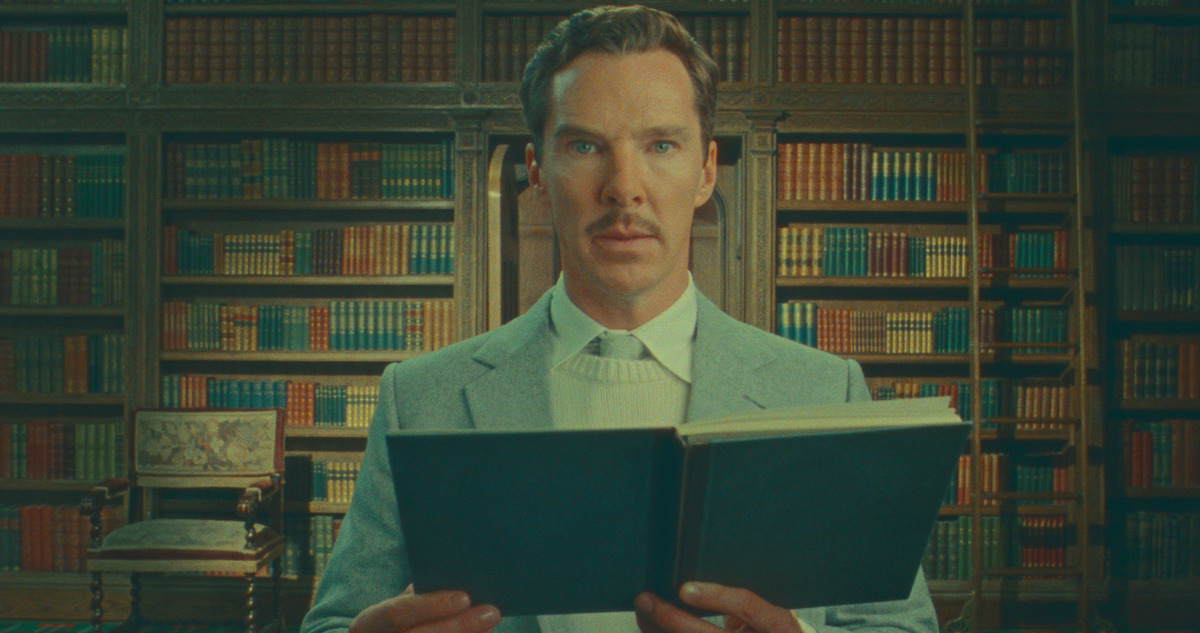Wes Anderson is no stranger to the film industry. His critically acclaimed, unique visual style can be recognized by a multitude of viewers. His newest endeavor is a short film titled The Wonderful Story of Henry Sugar. As one of four short films released in September adapted from Roald Dahl’s stories, Henry Sugar originally premiered at the Venice Film Festival on September 1st, 2023, and became available on Netflix on September 27th, 2023.
The film follows the story of a rich man named Henry Sugar (Benedict Cumberbatch) as he discovers a book containing the accounts of Imdad Khan (Ben Kingsley), a man with the ability to see without using his eyes. Henry makes it his mission to acquire this skill through careful meditation to cheat at gambling in casinos. But after finding the gigantic sums of money don’t satisfy him, Henry finds another use for the large amounts of cash he will continue to acquire.
This isn’t Anderson’s first exhibition regarding Roald Dahl adaptations, having previously brought Dahl’s popular book Fantastic Mr. Fox to the screen back in 2009, having a 93% approval rating. With this knowledge, it gives the short an added layer of nostalgia as one watches due to Dahl’s recognizable writing style. Henry Sugar is one of Dahl’s short stories that are intended for an older audience, and while these stories aren’t his most popular work, they have the same humor that Dahl’s other works do.
The Oscar-nominated short is taken almost entirely word-for-word from the original story, by having the main character of each scene narrate the exposition. Instead of having an omniscient narrator, the speaker stares into the camera and speaks directly to the audience, and if he has in-book dialogue, he looks away. The tone of each narrator is even and expressionless, helping to distinguish between narration and dialogue.
Additionally, the constant deadpan narration allows for the cinematography to really shine. This style of storytelling allows for Dahl’s distinctive tone to stay present throughout the short, while also allowing for Anderson to put his own spin on it.
The action of the film is continuous, containing shots where costume and setting shifts happen on-screen right before the audience’s eyes. Many of the sets are 2-D, and the onscreen costume and set changes give the viewer the impression that a play is unfolding before them. With the addition of Andersons’ characteristic visual techniques, particularly symmetrical framing, and a bright color scheme, there is always something of interest to view on the screen.
Like most of Anderson’s other films, color plays a large role. In Sugar’s first appearance he wears pale blues, he and men like him are regarded as “not particularly bad men, but they are not particularly good men either.” But once he realizes that making money doesn’t bring him joy like he thought it would, he wears red pajamas for most of his remaining screen time as he becomes a better, more giving person.
This story seems to warn the viewer that money can’t fulfill all of one’s wants in life. Sugar doesn’t feel happy when he walks out of the casino with his wad of cash because there was no thrill that went into winning the money. That’s why he finds a more productive use of the money. Many people today buy and consume mass amounts of products in hopes that they will remedy any of the problems they’re facing, but that happiness is only temporary. This cycle is hard to break and requires introspection that not all of us have the time for with our ever-busy everyday lives.
Furthermore, the film highlights the importance of self-reflection through the characters of Khan and Sugar. Both characters learn their talent through intense practice and meditation. They are able to find what satisfies them in life because of the large amounts of time they took for self-reflection. A lot of people don’t have this opportunity in real life because, again, we just don’t have the time. Despite the fact the original story was written in 1977, Anderson brings back Dahl’s message that people have the capability to unlock their full potential when they are given the time to just be.
We both enjoyed the way that the narrative flowed and tied in with Anderson’s directing style. Watching this short brought back memories of reading Dahl’s novels as a kid, and it’s a reminder that it is possible to find fulfillment through introspection. The other three Dahl-based shorts promise to deliver the same important messages along with the comforting nostalgia of the colors and humor of the story. Nostalgia is a powerful tool, and it should be used to help people better understand who they are.

